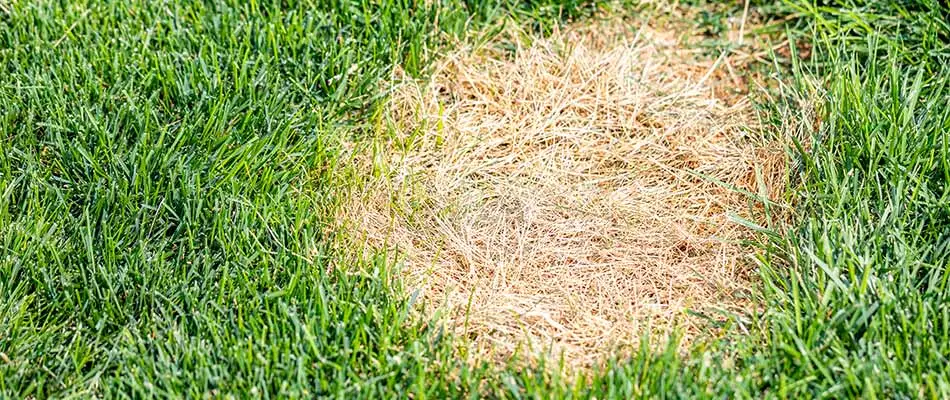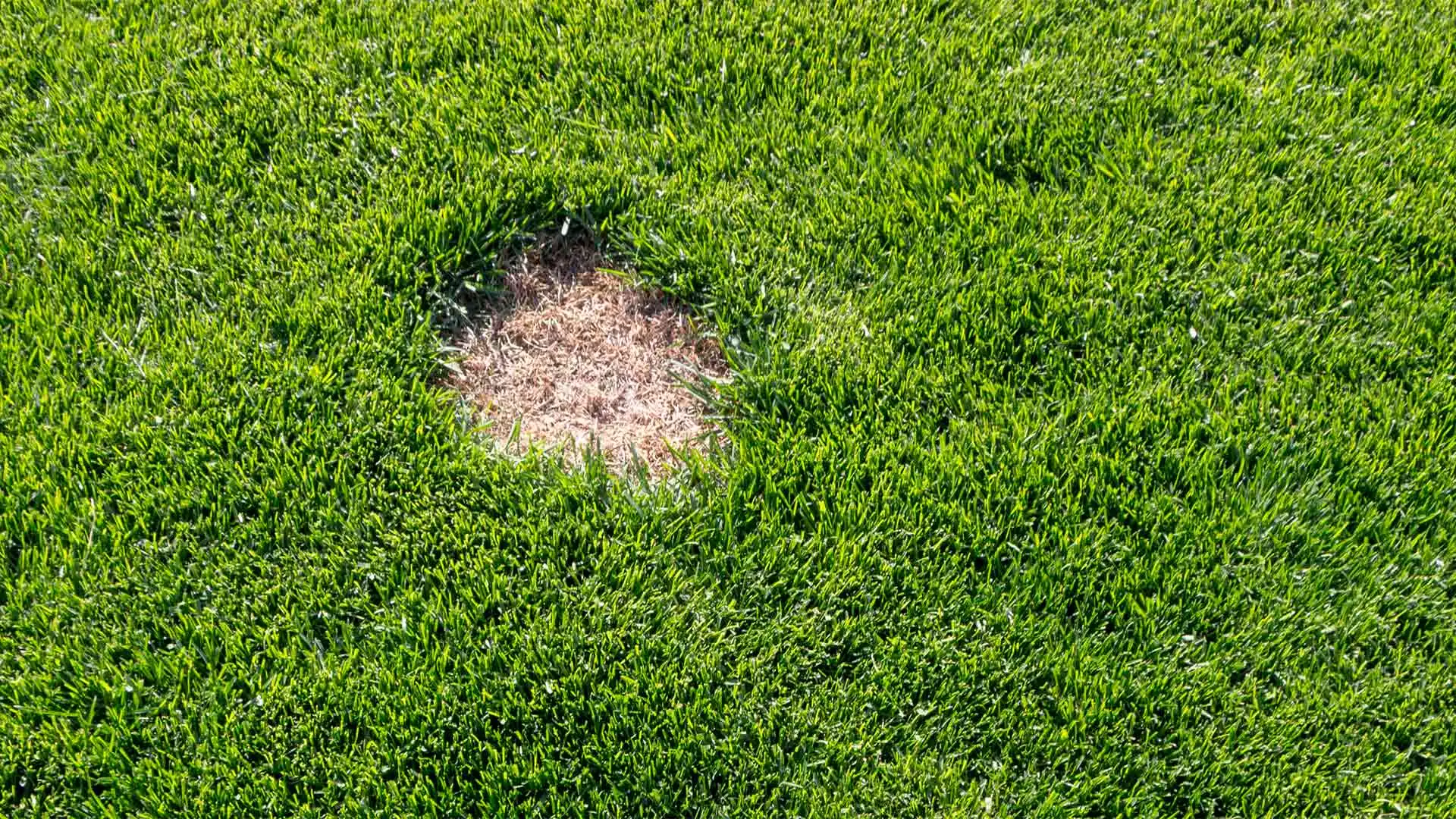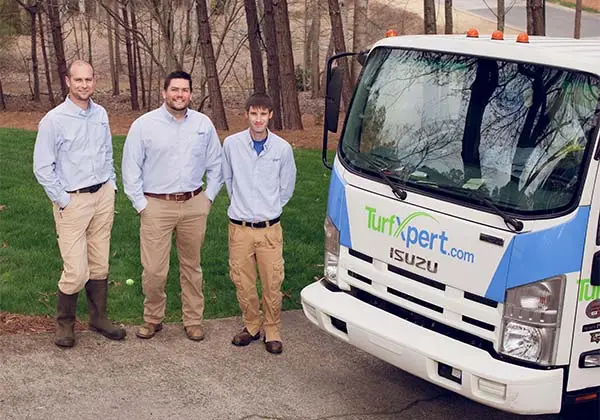Spring dead spot control and treatment services for homes and businesses in Woodstock, Roswell, Alpharetta, and nearby Georgia counties.
This fungal lawn disease rots grass foliage from the inside out and becomes more noticeable when grass starts to green-up after dormancy.
Spring dead spot is one of the most devastating lawn diseases for bermudagrasses. One frustrating aspect of this fungal disease is that the damage isn't visible until the rest of your lawn comes out of winter dormancy. Another oddity is that spring dead spot is more prevalent in mature and well-maintained lawns, much unlike other lawn diseases that will spread due to an unhealthy turf.
Controlling and treating spring dead spot involves performing several different lawn care and maintenance services, including applying a pre-emergent in the fall. Our team can help amend lawns of spring dead spot for homes and businesses located near the metro Atlanta area, including in Woodstock, Roswell, and Alpharetta.
Identifying Spring Dead Spot

What many people don't realize is the damage from spring dead spot actually occurs during winter dormancy. Although you're able to finally see the afflicted areas of your lawn once spring arrives, by this point, it's too late. Most of the harm has already been caused to the grass.
Bermudagrass strains are impacted the most by spring dead spot. It damages the roots, rhizomes, and stolons of your grass and rots the turf patch completely. If this fungal disease goes unmanaged, it can reoccur in the same spots every year and will only continue to grow in size. Most spring dead spot patches range in size from 6 inches to several feet in diameter.
Spring dead spot produces circular patches of dead grass that looks as if it's been bleached. This is why most of the damage is only noticeable in the spring. These deadened grass areas blend in with the rest of your dormant lawn and become visible once the grass greens up.

While most lawn diseases appear due to a lawn being improperly cared for, spring dead spot is seen mostly throughout well-maintained and mature turfs, like athletic fields and golf courses.
What Causes Spring Dead Spot to Form?
Spring dead spot is most active in the fall and early spring when the soil is moist and temperatures are between 50-70 degrees Fahrenheit. How much damage spring dead spot will create depends heavily on the weather. The fungus itself doesn't actually kill the plant, rather it sensitizes the grass to freezing injury.
The majority of the damage occurs because the turf is exposed to cooler temperatures during winter dormancy. The symptoms of spring dead spot will worsen in cold, wet winters, while less damage is seen during warm or dry weather.
Many factors increase your lawn's chance for winter injury and the likelihood of spring dead spot. These issues can include:
- Excessive nitrogen in the soil
- Potassium deficiencies
- Poor soil drainage
- Thatch buildup
- Compacted soil
How Do You Cure Spring Dead Spot?
Applying a pre-emergent fungicide in the fall a month before the grass goes dormant is recommended as a preventative care measure. Otherwise, clients should prepare for a slow recovery time for their bermudagrass.
The diseased areas consist entirely of dead grass, so healthier turfgrass needs to grow in its place to repair the damaged patches. That's why it might take the rest of the growing season until you start seeing results.
Other methods that help minimize the potential for spring dead spot are:
- Aeration and overseeding- Performing aeration and overseeding together will encourage new bermudagrass growth to appear in place of the dead grass.
- Infrequent watering- Limiting your lawn watering in the fall will keep the condensation from further predisposing your grass to spring dead spot and winter injury.
- Dethatching your lawn- Excessive thatch buildup reduces the cold hardiness of your turfgrass. Since this fungal disease also decreases this hardiness, dethatching can remove any extra buildup between the grass and soil.
- Applying a low nitrogen fertilizer- Soils with high nitrogen levels increase spring dead spot activity. Fertilizing your lawn in the fall with a low nitrogen fertilizer helps control how much is added.
We can help protect your lawn from spring dead spot and ensure your grass is good to go for the spring season!
Spring dead spot can be avoided with the right fall preventative care. Our company offers pre-emergent fungicide applications and other lawn care services that will protect your turf and have it ready for the spring growing season!
Homes and business throughout Woodstock, Roswell, Alpharetta, and surrounding Georgia cities can expect professional and high-quality services from our team at TurfXpert! Call (833) 444-8873 today to learn how we can save your lawn from spring dead spot and other lawn diseases.



